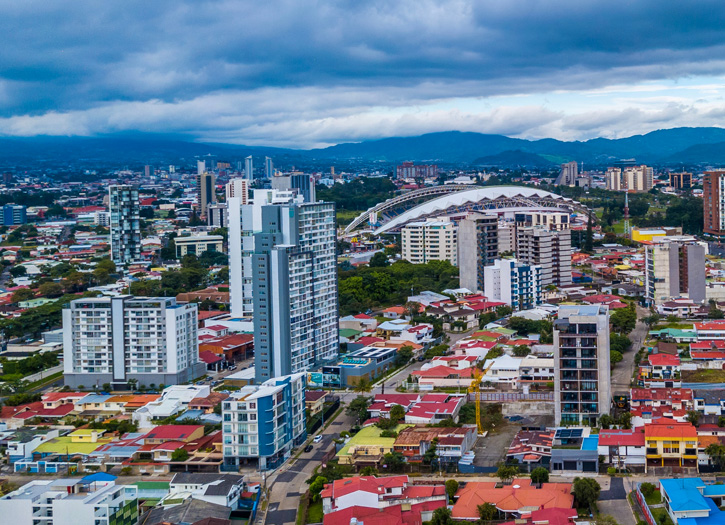The COVID-19 pandemic in Costa Rica is part of the ongoing worldwide pandemic of coronavirus disease 2019 (COVID-19) caused by severe acute respiratory syndrome coronavirus 2 (SARS-CoV-2). The virus was confirmed to have spread to Costa Rica on 6 March 2020, after a 49-year-old woman tourist from New York, United States, tested positive for the virus.As of 17 September 2020, Costa Rica has reported 60,618 positive cases, 22,662 recoveries, and 666 deaths.
On 13 March, the Ministry of Health confirmed 3 new cases, raising the total number of cases to 26, found in the provinces of San José, Alajuela, Heredia and Guanacaste, plus now the province of Cartago. On 15 March, the Costa Rican health authorities reported 8 more cases of the virus, for a total of 35. It was reported that there were 19 women and 16 infected men, of whom 30 were Costa Rican and 5 foreigners, with positive cases being registered in San José, Heredia, Guanacaste, Alajuela and Cartago
On 29 March, the Ministry of Health reported a total of 314 confirmed cases, for an increase of 19. Of the reported cases, 164 represented men and 150 women, of which 290 are Costa Rican and 24 foreigners. There have been 3115 negative tests, and 13 people have been hospitalized. The first case was also reported in the canton of Osa.On 30 March, health authorities announced an increase of 16 cases, for a total of 330. Cases included 170 males and 160 females, 303 are Costa Ricans and 27 are foreign nationals; 293 are adults, 24 are senior citizens, plus 13 minors.
In addition, the Legislative Assembly approved two bills to increase the fines for noncompliance with sanitary orders and vehicle restriction. Fines ranging from ₡450,000 (US$780) to ₡2.2 million (US$3,800) would be applied if a person having risk factors and being a suspected or confirmed case of the disease fails to comply with the isolation order. In the case of the traffic law reform, drivers could be subject to a fine of ₡107,000 (US$185), a loss of six points on their license, and removal of license plates if they violate the restriction.On 9 April, the Government announced the launch of an economic bonus for those workers affected by the COVID-19 pandemic. The bonus varies between ₡125,000 (US$215) per month for people laid off or with a workday reduced to 50% or more, and ₡62,500 (US$108) per month for those who have reduced their workday by 50% or less.
On 11 May, the Ministry of Public Education announced that regular attendance lessons would return after the summer holidays, scheduled between 29 June and 10 July, as long as the situation of the pandemic allows it. The Ministry of Environment and Energy, announced a plan to reopen twelve National Parks in the country, with health measures to prevent the spread of the virus, such as the limited entry of people. On June 1 the Ministry of Health reported On July 9 Costa Rica got to 649 new cases which is, maybe, the biggest number of cases in one day. Also, the health ministry declared that in GAM (Gran Area Metropolitana) there was community contagion. And in cantons that were in orange zone would have different vehicular restriction.
On 17 July the Garabito local government announced they would not follow the central government orders on shops and commercial closures for an Orange Alert area due to the data showing that the canton was in good conditions for commercial operations as in a Yellow Alert area. By 25 March, the Chamber of Commerce and the Federation of Business Chambers of the Central American Isthmus reported that around 3% of the companies have reduced their workforce, with such figure projected to grow to 55% in a month.
On 25 March, the Costa Rica Institute of Tourism declared the tourism sector in a total emergency and calamity state; a zero visitors season is expected for at least three months.On 26 March, the Chamber of Restaurants and Bars of Costa Rica (CACORE) reported 109,000 laid off workers, and 42% (7,980) of the affiliated businesses were closed.







Add Comment
You must be logged in to post a comment.